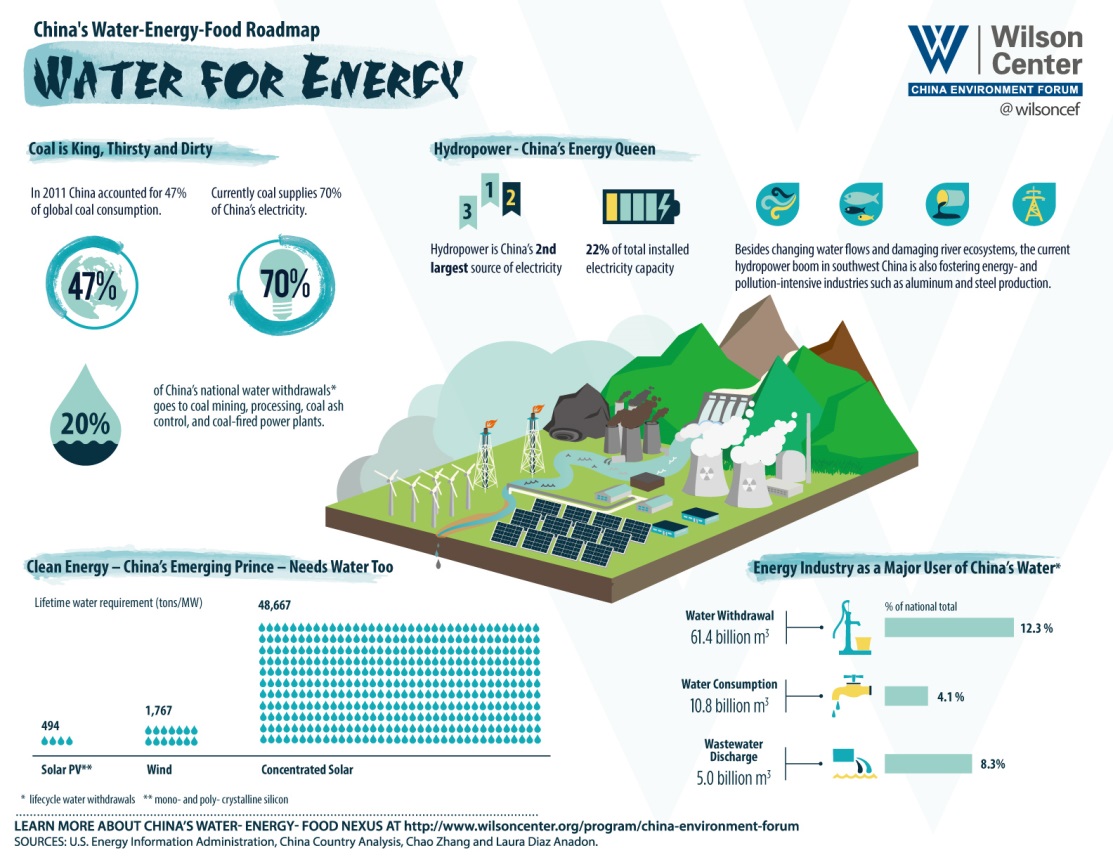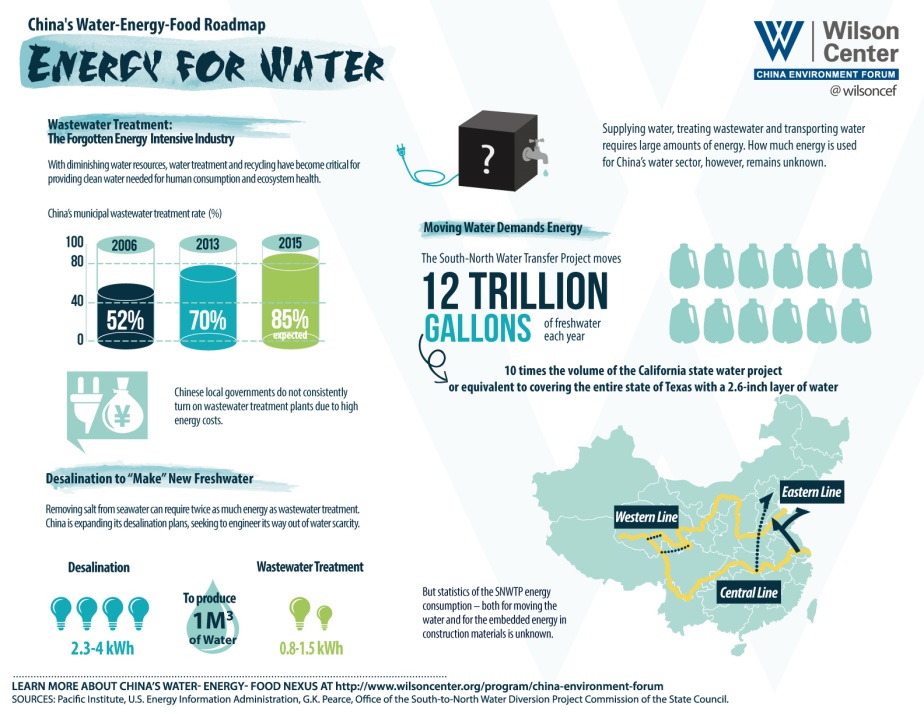-
Illustrating China’s Water-Energy-Food Choke Points [Infographics]
May 6, 2015 By Siqi HanLast month, the China Environment Forum released a new Global Choke Point report, China’s Water-Energy-Food Roadmap. To date, we believe this is the most comprehensive report on China’s interlinked natural resource insecurities – dwindling water resources in the face of growing energy use and increasing food demand.
In addition to providing policy recommendations, we created a series of infographics to help our readers visualize the interactions between water, energy, and food. “These interactions are complex and often off the radar for people,” said China Environment Forum Director Jennifer Turner. “Infographics are an impactful way to show how they relate to each other.”
Water scarcity and pollution is already a major component of China’s environmental crisis and it will only worsen as the energy sector, including renewable energy, expands. As illustrated in Figure 1, the production and use of coal accounts for up to 20 percent of China’s national water withdrawals. At the same time, the development of hydropower in southwest China affects river ecosystems and often is correlated with the development of highly polluting industries. Similarly, while the booming clean energy industry may alleviate air pollution, some renewable energy sources, for example concentrated solar power, demand a significant amount of water placing more pressure on the country’s hydro resources.
To bridge the widening gap between scarce water supply and growing demand, Chinese policymakers are pursuing alternative solutions such as wastewater treatment, desalination, and the great South-North Water Transfer Project. These, however, have huge costs in terms of energy consumption. The challenge then was to design an infographic showing how energy has become both a financial and operational burden for “making” freshwater.
The food production cycle, from farming and processing to packaging, storage, and distribution, has a large water and energy footprint as well. In China, the rising domestic demand for food and inefficient use of resources is increasing the amount of water and energy used to irrigate farmland, produce meat, and power modern kitchens.
These infographics were created to provide an engaging and interactive reading experience for a wide range of audiences – from policymakers and NGO practitioners to corporate executives and students – to encourage deeper discussion on China and the rest of the world’s water-energy-food choke points.
How do you think we did?
Download ‘China’s Water-Energy-Food Roadmap’ from the Wilson Center’s China Environment Forum.
Siqi Han is a Master’s candidate in environmental economics and policy at the Duke University Nicholas School of the Environment.
Infographics Credit: Siqi Han/China Environment Forum.
 A Publication of the Stimson Center.
A Publication of the Stimson Center.









